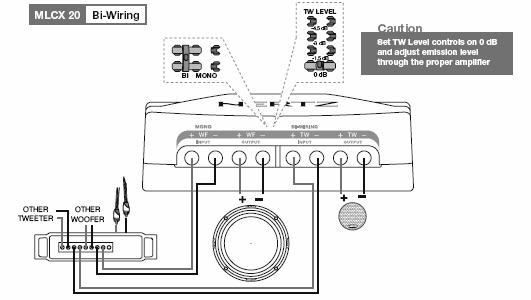Hi there,
I´m looking for your comments and advice on this.
I have a boston gt-42 (4x75w 4ohm or +- 220w 2 chan. bridged 4ohm i think?) and ready to fit the 2 way compo hertz mlk-165. They would go to the passive crossover (bi-wire capable) supplied in the kit.
Which would be the preferable scenario (objective SQ):
1 - bi-wire all channels to each mid and tweeter outputs from crossovers, as per
![Image]()
in which i would probably still have 75w per channel, or;
2 - bridge the amp at its outs, so just 1 pair of wires gos into the crossovers, but with higher power
Also in bi-wiring, and because the scheme puts the attenuation at 0db stating to control from amp, isnt this like going half-active or something? alpine 9887R has its own low/band/high active crossovers.
So which scenario i would get a better SQ, with bi-wiring/lower power, or regular single wiring but higher watts?
greets
I´m looking for your comments and advice on this.
I have a boston gt-42 (4x75w 4ohm or +- 220w 2 chan. bridged 4ohm i think?) and ready to fit the 2 way compo hertz mlk-165. They would go to the passive crossover (bi-wire capable) supplied in the kit.
Which would be the preferable scenario (objective SQ):
1 - bi-wire all channels to each mid and tweeter outputs from crossovers, as per

in which i would probably still have 75w per channel, or;
2 - bridge the amp at its outs, so just 1 pair of wires gos into the crossovers, but with higher power
Also in bi-wiring, and because the scheme puts the attenuation at 0db stating to control from amp, isnt this like going half-active or something? alpine 9887R has its own low/band/high active crossovers.
So which scenario i would get a better SQ, with bi-wiring/lower power, or regular single wiring but higher watts?
greets




